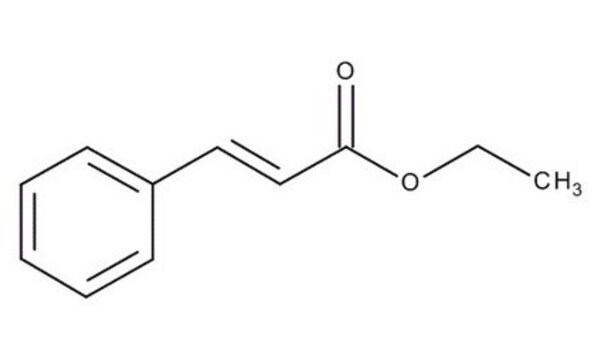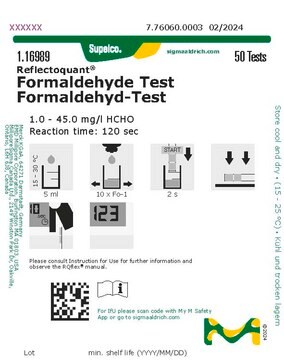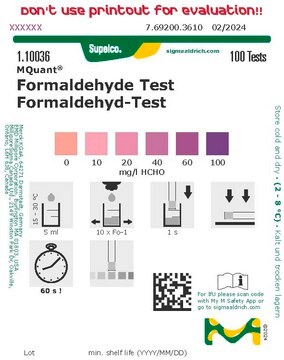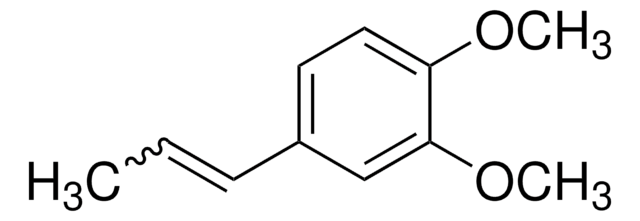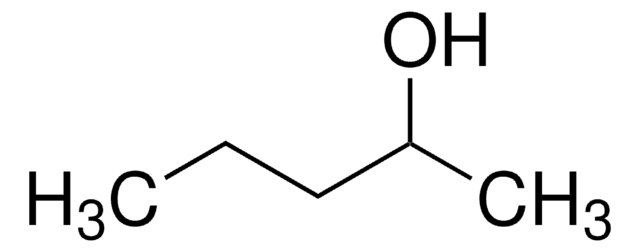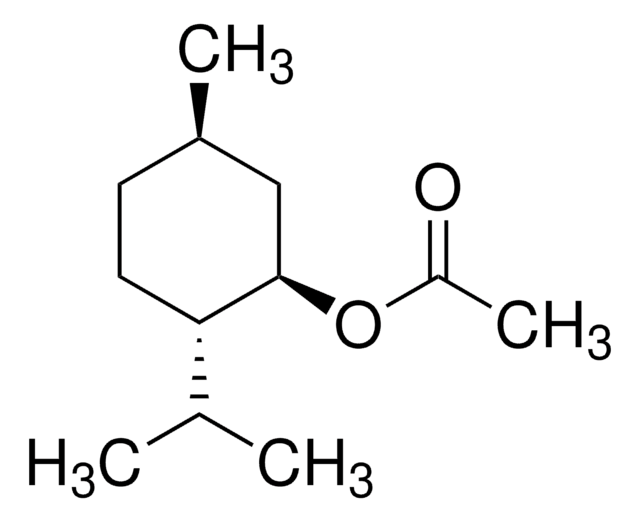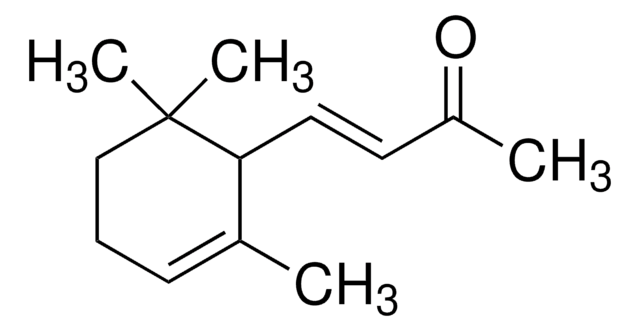W243000
Ethyl cinnamate
≥98%, stabilized, FCC, FG
Synonym(s):
3-Phenyl-2-propenoic acid ethyl ester, Ethyl 3-phenyl-2-propenoate, NSC 6773
About This Item
Recommended Products
biological source
synthetic
Quality Level
grade
FG
Halal
Kosher
reg. compliance
EU Regulation 1334/2008 & 178/2002
FCC
FDA 21 CFR 117
FDA 21 CFR 172.515
Assay
≥98%
contains
synthetic α-tocopherol as stabilizer
refractive index
n20/D 1.558 (lit.)
bp
271 °C (lit.)
mp
6-8 °C (lit.)
density
1.049 g/mL at 20 °C (lit.)
application(s)
flavors and fragrances
Documentation
see Safety & Documentation for available documents
food allergen
no known allergens
Organoleptic
cinnamon; spicy; fruity; balsamic; sweet
SMILES string
CCOC(=O)\C=C\c1ccccc1
InChI
1S/C11H12O2/c1-2-13-11(12)9-8-10-6-4-3-5-7-10/h3-9H,2H2,1H3/b9-8+
InChI key
KBEBGUQPQBELIU-CMDGGOBGSA-N
Looking for similar products? Visit Product Comparison Guide
Application
- Decoding the Effect of Running on Flavor Perception Changes during Consumption of Sports Drinks.: This study explores how physical exercise affects the perception of flavors in sports drinks, with ethyl cinnamate playing a role in altering taste perception during and after running (Pu et al., 2024).
- Ethyl cinnamate suppresses tumor growth through anti-angiogenesis by attenuating VEGFR2 signal pathway in colorectal cancer.: This paper discusses the inhibitory effects of ethyl cinnamate on tumor growth in colorectal cancer by interfering with the VEGFR2 signaling pathway, thereby reducing angiogenesis and tumor progression (Wang et al., 2024).
Storage Class Code
10 - Combustible liquids
WGK
WGK 1
Flash Point(F)
Not applicable
Flash Point(C)
Not applicable
Personal Protective Equipment
Choose from one of the most recent versions:
Already Own This Product?
Find documentation for the products that you have recently purchased in the Document Library.
Customers Also Viewed
Our team of scientists has experience in all areas of research including Life Science, Material Science, Chemical Synthesis, Chromatography, Analytical and many others.
Contact Technical Service
